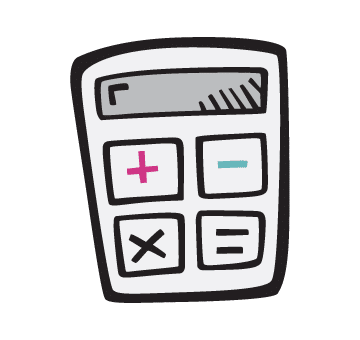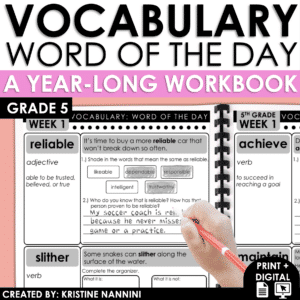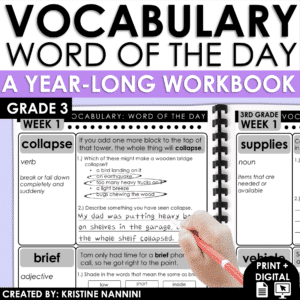Best Practices for Building Students’ Vocabulary
I’m here to share my experience and talk about best practices for building students’ vocabulary. Are you perplexed, flabbergasted, or maybe even flummoxed when it comes to teaching vocabulary? What words do I teach? How do I teach them? Is it worth it? Can I just skip this?

Do We Need to Teach Vocabulary?
First things first, we NEED to teach vocabulary. I’ve had the debates with fellow teachers and heard the arguments – “There’s not enough time” or “Students will pick it up naturally.” It’s true—most vocabulary is learned without formal teaching from home, peer interaction, television, social media, reading, etc.
If students will just absorb it, why is explicitly teaching vocabulary necessary? Short answer: All kids have different circumstances. Students will come to your classroom with wide vocabulary gaps that likely started well before they were even school age. Our students come from different backgrounds and environments and have different interests. Some have been exposed to a wide variety of literature and experiences, and some haven’t. If you don’t explicitly teach vocabulary, you are relying on each students’ environment to supply them with the necessary vocabulary. Explicitly teaching vocabulary is the best way to level the playing field and provide every student with the vocabulary necessary for success. Research shows that explicitly teaching vocabulary can measurably improve reading comprehension—if we teach the right words well enough.
What words do I teach?
What words are the “right” words
Words are put into three tiers:
Tier One: Basic words that are frequently used in oral language. (door, house, book).
Tier Two: High-utility words that appear often across a variety of domains and are crucial when using mature, academic language. These words are not used often in oral language. (rummage, scoundrel, bawl).
Tier Three: Rarely used words specific to a domain or field of study. (isotope, Reconstruction, Buddhism).
Tier One words are already known and used by students every day. There’s no point in teaching them. Tier Three words are so rare that it only makes sense to teach them only when you are introducing the specific chapter or unit in science, social studies, etc. Accordingly, students will benefit the most academically by focusing instruction on the Tier Two words. What makes a Tier Two word the “right” one to teach?
A good Tier Two word:
- appears often across domains in grade-level material
- is “kind of known” or “unfamiliar” to students reading at grade-level
- can be described or defined by students using vocabulary they already know
- relates to concepts they understand
- relates to words they already know (shades of meaning)
In my system of teaching vocabulary, I have already identified the words for you. I have carefully chosen words that will be productive additions to your students’ vocabulary. These are unfamiliar high-frequency words that will help them with reading comprehension and standardized testing.
How do I teach vocabulary?
Now that we know which words to teach, let’s focus on how to teach them. What are the best practices for building students’ vocabulary?
Do you remember when you learned vocabulary in school? You probably had some random list of words from a class novel, textbook, or workbook. Your teacher gave you the words, and then you had to find them in a dictionary or glossary and write out the definition. Sound familiar? Fortunately, we know this strategy isn’t effective. These are not best practices! We can do much better! Here are four key principles to effective vocabulary instruction. With each, I’ll share a snapshot from my Word of the Day resources to further explain the principle.
1.) Encourage students to define words several different ways:
It’s important for students to engage in providing many different versions of a word’s meaning. The dictionary definition, part of speech, and use in a sentence are helpful, but they can do a lot more. Other ways to define a word:
- Real-life examples
- Representation (drawing/pictures)
- Synonyms
- Antonyms
- Analogies (e.g, vicious: it’s like a tiger chasing down a gazelle)
- Word Parts (i.e., greek/latin roots, prefixes, and suffixes)
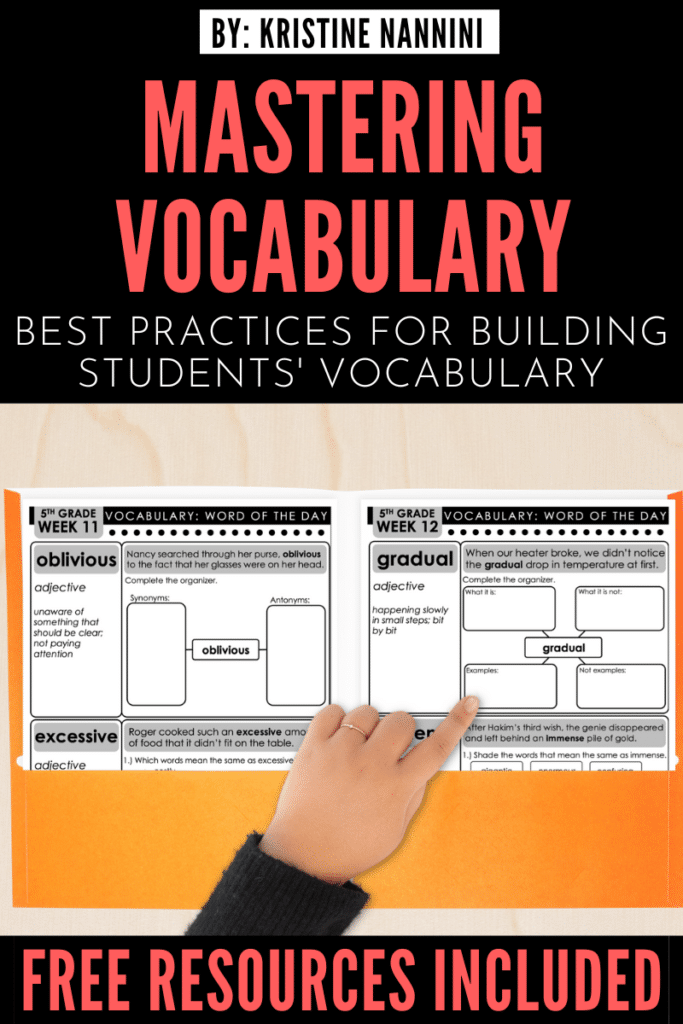
2.) Association:
If students try to absorb words without context, they’ll have a hard time adding them to their language. Association is the process of connecting new, incoming information, to old pre-existing information. Students will do this naturally if they are provided with the right information. When introducing a word, you can have students:
- use or read in the word in a sentence that provides context
- identify others that are like it (synonyms)
- identify opposite words (antonyms)
- identity examples and non-examples
- identify the attributes, features, or functions of a word
- link them to words or definitions of words they already know
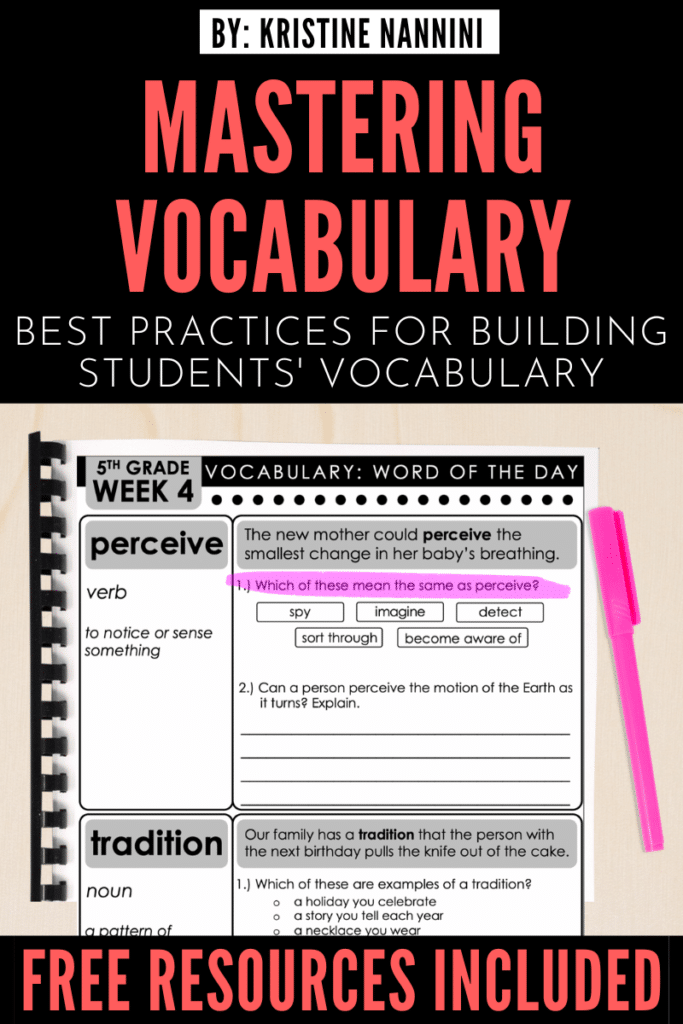
3.) Personal Connection:
Studying word meanings isn’t enough. Students must connect these words to their own life while reading, writing, speaking, and listening. Give student the opportunity to do that. This is on best practices for building students’ vocabulary that I find most valuable.
Examples (using the word perplexing):
- Have students write about a time they encountered something perplexing.
- Have students share their writing with a friend so they each can read and discuss each other’s encounters or experience with the word perplexing.
- Have students come up in front of the class and speak about something that they found perplexing.
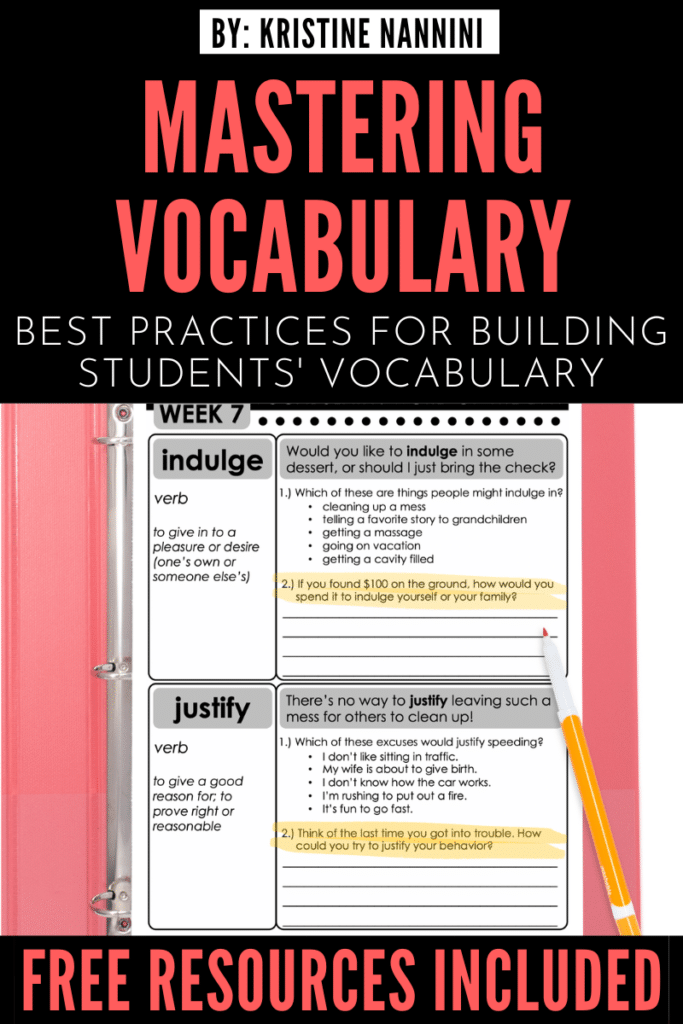
4.) Review:
Vocabulary is hard to retain if you don’t have a lot of chances to use it. Studies show that one of the most important components of learning is repetition and practice. It helps strengthen connections in the brain. Meaningful review is a great way to provide that repetition. Set aside a day each week to review words and give students an extra chance to interact with them.

A Simple and Effective Vocabulary Tool
My Vocabulary Word of the Day resource:
- takes all the guesswork out of word choice
- gets students to define words several different ways
- emphasizes the relationships and associations of words so students can classify them
- promotes personal connection to words
- promotes visual connections to words
- puts the words in context with language and vocabulary students already know, and
- gets students thinking how we can use words in different situations.
Check it out by clicking HERE.
A FREE Resource for Vocabulary Practice
There’s no doubt that you will want to provide your students with additional vocabulary practice. Below you will find some free activities you can do with students to help them engage with the vocabulary words in a deeper and meaningful way.

I included the free activities below to help you with your vocabulary instruction. If your students struggle to master any of the tier-two words within the Vocabulary Word of the Day resource, use any or all of the free activities to help your students extend their understanding and knowledge of the word they may be struggling with.
The activities include a printable and digital cootie catcher (above).
- postcard write and share (printable and digital)


- vocabulary sketch (printable and digital)
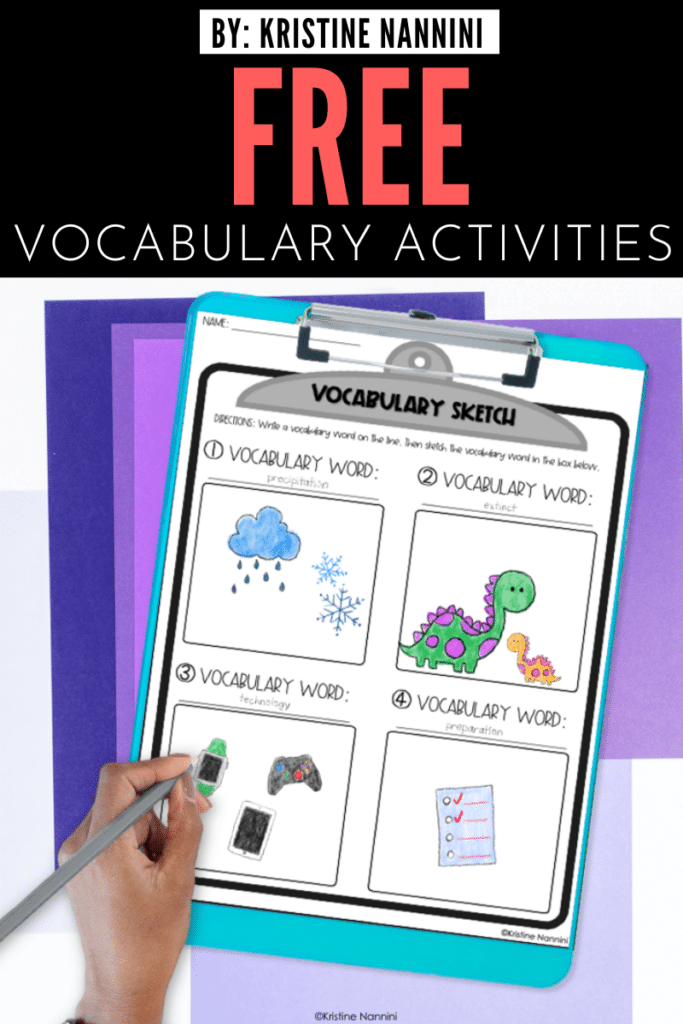
- vocabulary act it out (printable and digital)
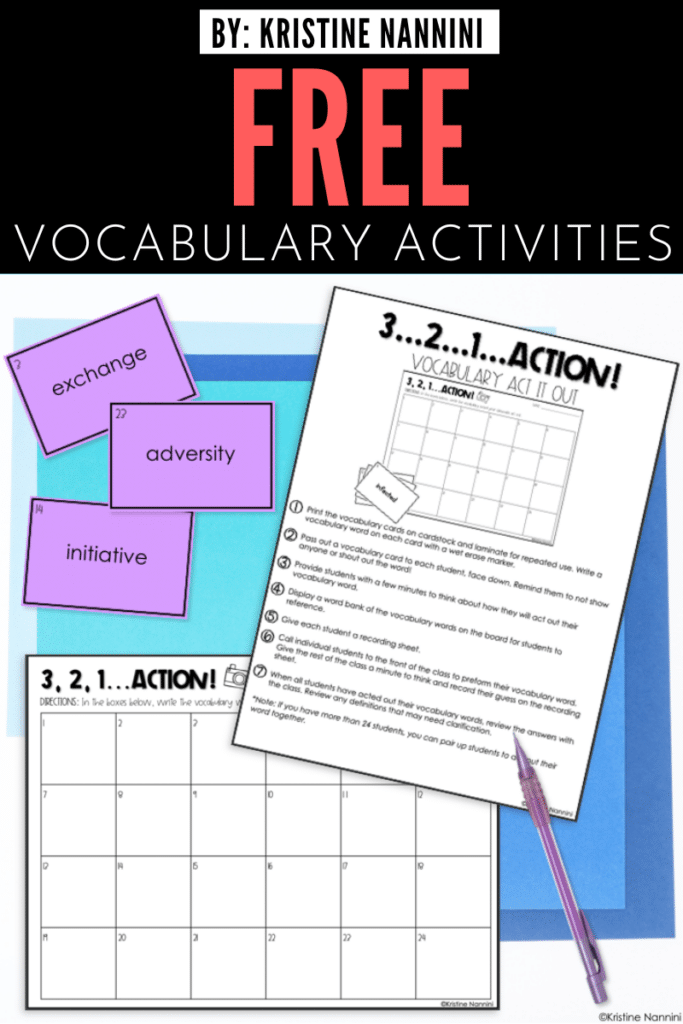

- vocabulary info cards (printable and digital)
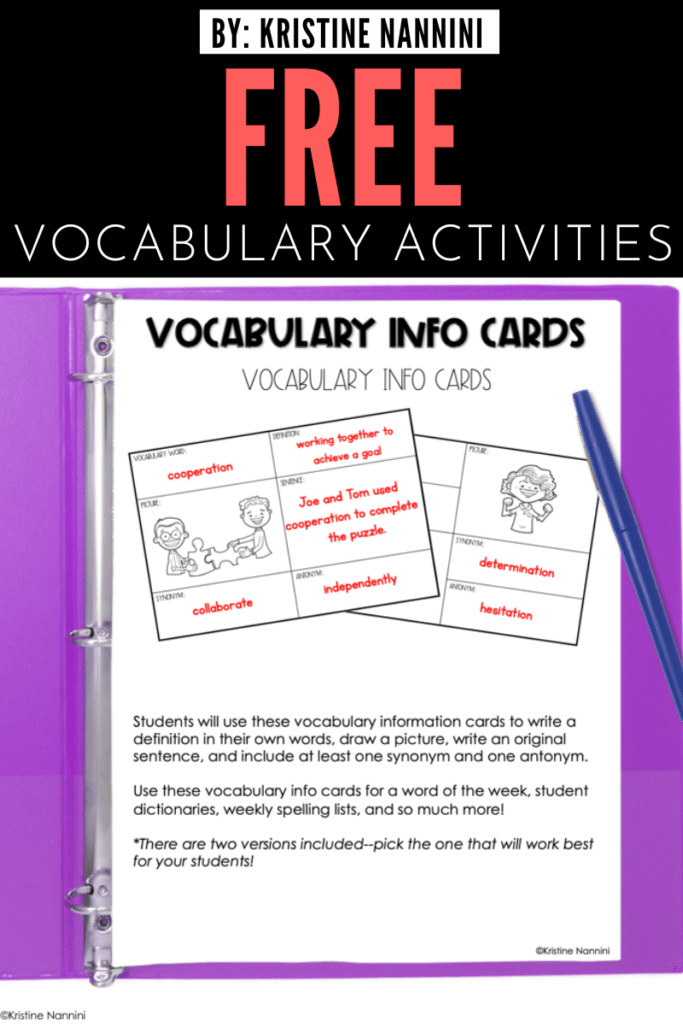
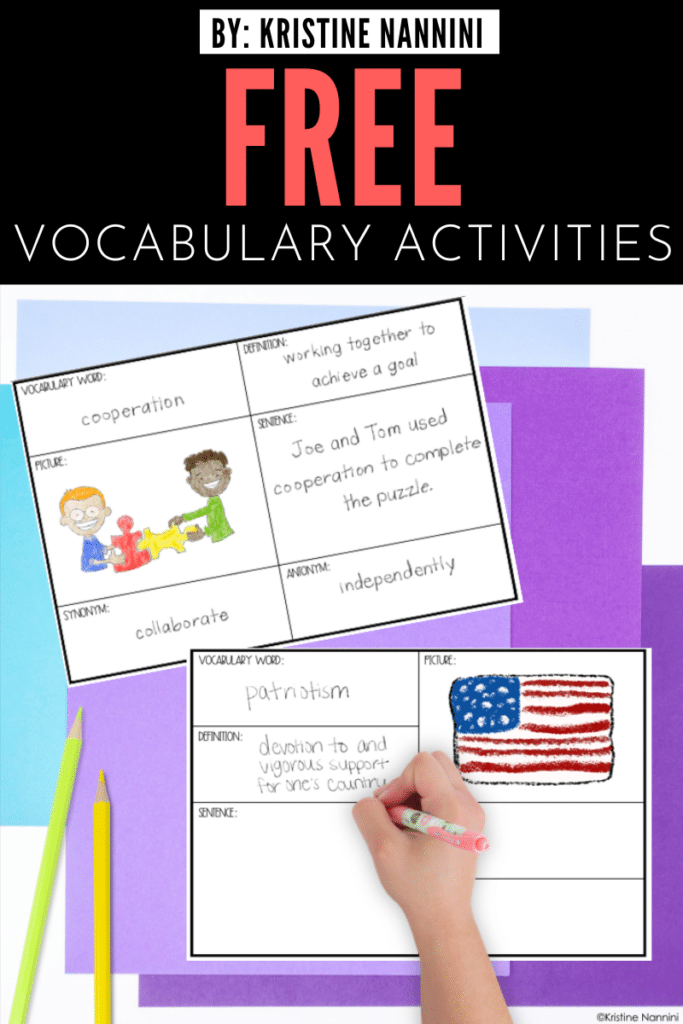

Sign up HERE or below to grab these freebies to use in your classroom!


